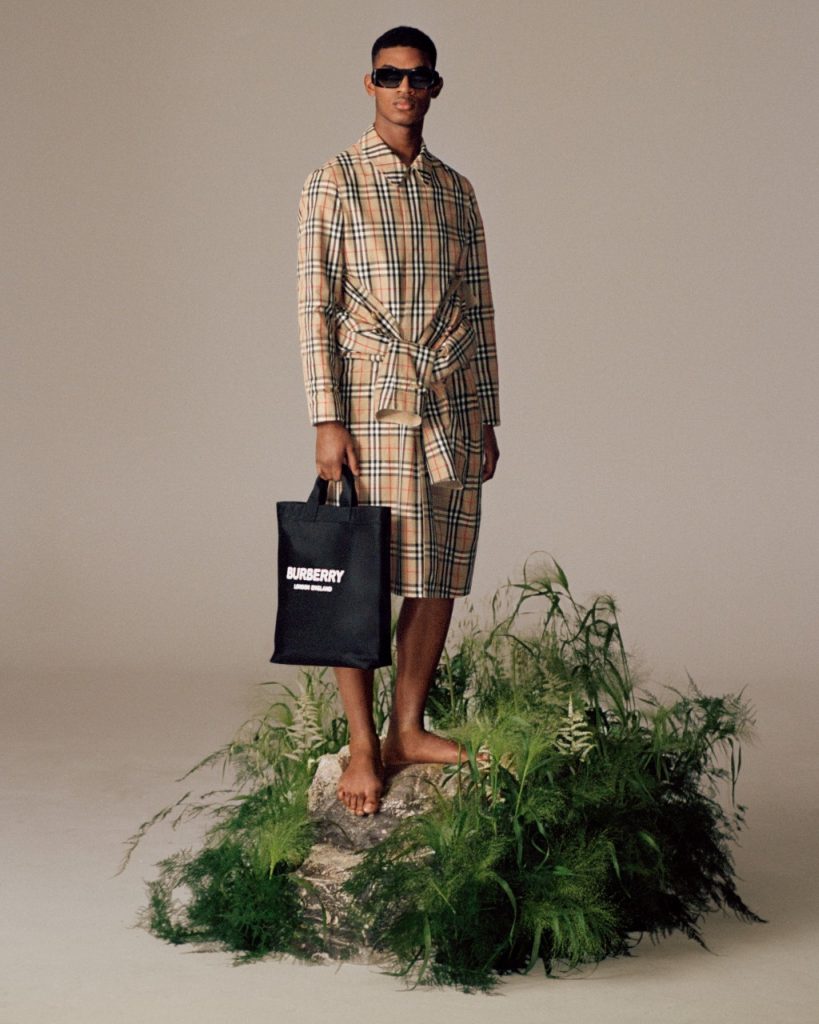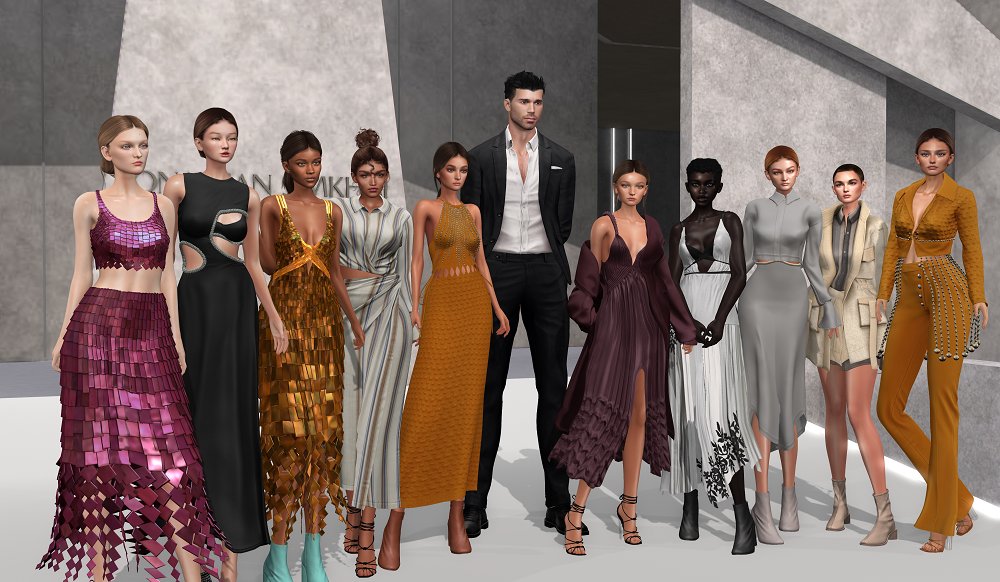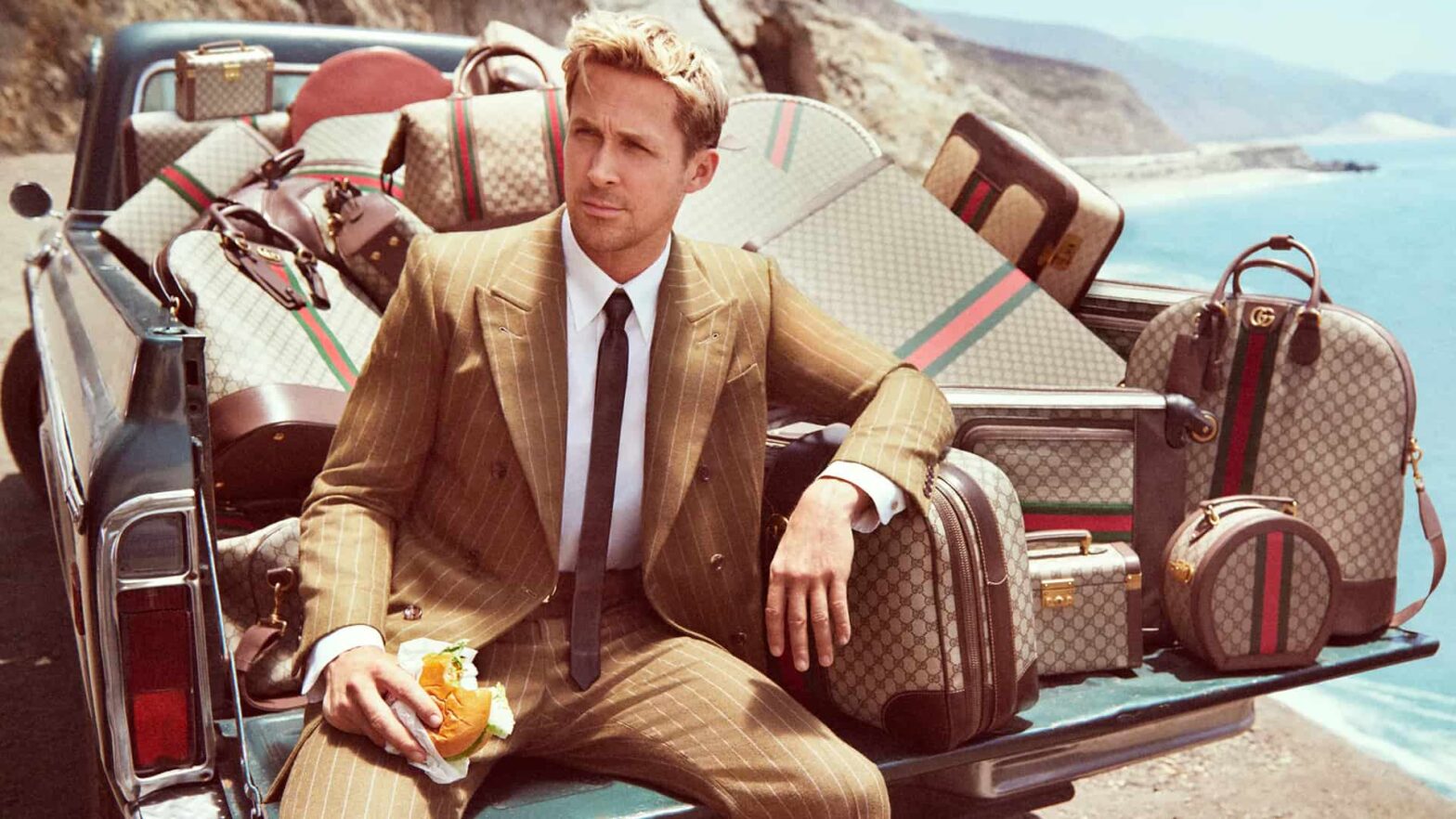The ever-evolving landscape of luxury fashion has undergone a significant transformation in the digital age. The traditional brick-and-mortar boutiques and high-end department stores that once defined luxury retail are now complemented and, in some cases, eclipsed by the digital realm. In this era of e-commerce dominance and social media influence, luxury fashion brands are facing new challenges and opportunities that demand strategic adaptation. This article explores the multifaceted aspects of luxury fashion in the digital age, from the impact of e-commerce to the power of social media, and how leading brands are navigating this dynamic landscape.
The Rise of E-Commerce

E-commerce has emerged as a game-changer for luxury fashion brands, reshaping the way consumers shop for high-end products. The convenience of online shopping has made luxury items more accessible to a global audience. Customers can now browse, purchase, and receive their favorite designer pieces with just a few clicks. However, this shift to digital retail presents both advantages and challenges for luxury brands.
One of the significant advantages of e-commerce is the ability to reach a broader customer base. Luxury fashion brands can transcend geographical boundaries and cater to a global audience, breaking free from the constraints of physical store locations. This expanded reach not only boosts sales but also enhances brand recognition on a global scale.
M&A business advisors can help you develop and implement a comprehensive e-commerce strategy that aligns with your overall business goals. They can also provide guidance on choosing the right technology and partners, and help you guide the difficult regulatory terrain.
Moreover, e-commerce allows luxury brands to collect valuable customer data. By analyzing online shopping behaviors and preferences, brands can tailor their offerings and marketing strategies to meet individualized customer needs. This data-driven approach enables a more personalized and engaging shopping experience, fostering brand loyalty and increasing customer retention.
Despite these advantages, luxury brands must grapple with challenges such as maintaining the exclusivity and desirability associated with their products. The digital marketplace can sometimes dilute the sense of luxury, as consumers may perceive online purchases as less exclusive than in-store experiences. To address this, luxury brands are investing in innovative online experiences, such as virtual shopping appointments and immersive digital showrooms, to recreate the allure of the physical boutique in the digital realm.
The Influence of Social Media
Social media has become an indispensable tool for luxury fashion brands to connect with consumers, create brand awareness, and drive sales. Platforms like Instagram, Facebook, and TikTok have become virtual runways, where fashion houses showcase their latest collections and engage with their audience in real time.
The power of social media lies in its ability to foster brand storytelling and authenticity. Luxury brands can convey their heritage, craftsmanship, and unique brand narratives through compelling visuals and captivating captions. By humanizing their brand image, they can resonate with consumers on a deeper level, forging emotional connections that go beyond the products themselves. When brands like beauty bar in Toronto prioritize their consumers and convey their unique stories through compelling visuals and captions, they create a deeper connection that extends beyond the products they offer.
Influencer partnerships have also become a cornerstone of luxury fashion’s social media strategy. Collaborations with fashion influencers and celebrities can amplify a brand’s reach and influence, reaching millions of followers in an instant. These partnerships leverage the trust and admiration that influencers have built with their audiences, lending credibility and aspirational appeal to luxury products.
Furthermore, social media provides an avenue for direct customer engagement. Luxury brands can conduct polls, surveys, and Q&A sessions to involve consumers in product development and decision-making. This level of transparency and inclusivity not only strengthens brand loyalty but also helps brands stay attuned to shifting consumer preferences and trends.
Challenges and Strategies
While the digital age offers immense opportunities for luxury fashion brands, it also presents unique challenges. One of the primary challenges is maintaining brand exclusivity and prestige in an era of mass accessibility. To address this, brands must carefully curate their online presence and partnerships to align with their desired image. Limited-edition drops and exclusive online events can also help preserve the sense of rarity associated with luxury items.
Data security and privacy are paramount concerns in the digital realm, especially for luxury brands that handle sensitive customer information. Implementing robust cybersecurity measures, such as access control systems in Philadelphia, and adhering to stringent data protection regulations is non-negotiable to safeguard both the brand and its customers.
Sustainability in Luxury Fashion

In recent years, sustainability has emerged as a critical concern in the fashion industry. Luxury fashion brands are increasingly focusing on environmentally responsible practices, and the digital age provides a unique platform to communicate these efforts to consumers. Through websites, social media, and email marketing, brands can share their commitment to sustainable materials, ethical sourcing, and eco-friendly production processes.
Out of that digital realm, there is a rising need for eco-friendly packaging because it not only aligns with the industry’s growing commitment to sustainability but also serves as a tangible representation of a brand’s dedication to preserving the planet, thus fostering a deeper connection with environmentally conscious consumers.
Moreover, luxury brands are harnessing the power of virtual reality (VR) and augmented reality (AR) to offer immersive experiences that promote sustainability. Virtual fashion shows, for instance, reduce the environmental footprint associated with physical events. Customers can use AR apps to visualize how a garment looks on them before making a purchase, reducing the likelihood of returns and excess waste. To talk to different people on virtual fashion shows, you will need to take classes from language arts tutors in Boulder.
Data-Driven Personalization
Personalization is at the heart of luxury retail, and the digital age has elevated this concept to new heights. Luxury fashion brands are leveraging sophisticated data analytics to create highly personalized shopping experiences. By analyzing customer data, brands can recommend products that align with individual preferences and past purchase history. This level of personalization enhances customer satisfaction and increases the likelihood of repeat business. For example, a roadside assistance provider could use personalization to recommend specific services or products to customers based on their vehicle type, driving habits, and past service history.
Moreover, artificial intelligence (AI) chatbots and virtual shopping assistants are becoming increasingly common on luxury brand websites. These AI-driven tools can engage with customers in real-time, answering questions, offering styling tips, and even providing personalized product recommendations. This not only improves the online shopping experience but also serves as a digital extension of the in-store customer service that luxury shoppers expect.
Exclusive Digital Collaborations
Collaborations have long been a strategy in the luxury fashion world, and in the digital age, they’ve taken on new forms. Luxury brands are collaborating with tech companies, artists, and influencers to create exclusive digital content. For example, some brands are partnering with renowned artists to create limited-edition digital art pieces that can be purchased as non-fungible tokens (NFTs). These digital collectibles add an element of exclusivity and artistry to the brand’s digital presence.
Even providers of managed IT services in San Antonio are collaborating with luxury brands to help them create and manage their digital presence. For example, one local IT provider recently partnered with a luxury fashion brand to develop a new e-commerce platform that features the brand’s latest products and collections.
Additionally, luxury fashion brands are partnering with video game companies to design in-game fashion collections for popular virtual worlds. Gamers are increasingly interested in customizing their avatars with high-end digital fashion items, presenting a new market for luxury brands to explore. As a Colorado Springs SEO company, we can help luxury brands create and promote their in-game fashion collections to reach a wider audience of gamers.
Augmented Reality Fitting Rooms
Augmented reality fitting rooms are revolutionizing the online shopping experience. Luxury fashion brands are developing AR apps that allow customers to try on clothing and accessories from the comfort of their homes. By simply using their smartphone cameras, shoppers can see how a piece fits and looks on it in real-time.
This technology not only enhances the convenience of online shopping but also reduces the uncertainty associated with sizing and fit. Luxury brands can take it a step further by offering personalized styling recommendations based on the customer’s virtual try-on session, and a bridge lender can help them finance this investment. The integration of AR into the e-commerce experience provides a level of interactivity that bridges the gap between physical and digital shopping.
Digital Couture and Customization
Customization has always been a hallmark of luxury fashion, and the digital age is taking it to new heights. Luxury brands are offering digital couture services that allow customers to design their own bespoke pieces online. Through interactive digital platforms, customers can select fabrics, choose designs, and customize every detail of their garment, creating a one-of-a-kind piece. This level of customization is even being extended to luxury saddle blankets, which can now be designed to perfectly match the rider’s outfit and horse’s tack.
These digital couture experiences are not only highly engaging but also cater to the growing demand for unique, personalized fashion items. Luxury fashion brands are integrating 3D design tools into their websites, enabling customers to see their creations come to life in a virtual environment before finalizing their orders.
Blockchain for Transparency
Blockchain technology is gaining traction in the luxury fashion industry, primarily for ensuring transparency in the supply chain. Luxury brands are using blockchain to provide customers with detailed information about the origin of materials and the production process of their products. This level of transparency builds trust and allows consumers to make more informed, ethical purchasing decisions. If you have a fashion store that was recently caught in the floods, don’t hesitate to contact emergency restoration services in Charlotte to help you get back on your feet.
In addition to supply chain transparency, blockchain can also be used to verify the authenticity of luxury goods. By assigning unique digital certificates to each product, brands can create a tamper-proof record of their items’ provenance. This not only helps combat counterfeiting but also enhances the perceived value of genuine luxury products.
Virtual Fashion Shows and Experiences: A New Era of Luxury Engagement
Virtual fashion shows and experiences have emerged as a pivotal component of luxury fashion brands’ digital strategies, ushering in a new era of engagement and innovation. In an age where physical gatherings can be challenging, luxury brands have adapted by creating immersive, accessible, and captivating digital events.
These virtual fashion shows are not mere replacements for their physical counterparts but transformative experiences in their own right. Here, we explore the nuances of these digital showcases and their profound impact on the luxury fashion industry. And if you are looking for a luxury property, be sure to check out the homes for sale in Delray Beach FL.
Immersive Digital Runway Shows
Luxury fashion houses have harnessed the power of technology to produce virtual runway shows that are nothing short of spectacular. These immersive experiences go beyond a simple video presentation. They incorporate cutting-edge techniques such as 3D modeling, motion graphics, and cinematic storytelling to transport viewers into a digital realm of fashion. For those who want to watch the shows in private, privacy shades can be a great way to avoid being seen.
In these digital showcases, viewers can explore every detail of the collection, zooming in on fabrics, embellishments, and craftsmanship, just as they would in a physical showroom. The dynamic and interactive nature of these virtual runways allows brands to push creative boundaries, experimenting with unconventional settings, backdrops, and narratives to convey their brand identity and the essence of each collection. If you’re a fashion brand owner who has earned enough to buy a property with a house, and you find that the roof is damaged, you can hire a company for residential roof repair in San Diego CA to address the issue.
Global Accessibility and Inclusivity
One of the significant advantages of virtual fashion shows is their global accessibility. They break down geographical barriers, making high fashion accessible to a worldwide audience. Luxury brands can extend their reach far beyond the confines of a traditional fashion capital, introducing their collections to a diverse and international clientele.
Moreover, virtual fashion shows foster inclusivity. They can be watched by anyone with an internet connection, democratizing access to the world of luxury fashion. This inclusivity aligns with the changing dynamics of the industry, where diversity and representation have become central themes. Luxury brands can use these digital platforms to celebrate diversity and inclusivity in their collections, messaging, and casting choices.
Virtual Reality Experiences

Virtual fashion experiences are evolving even further with the integration of virtual reality (VR). Luxury brands are experimenting with VR technology to create fully immersive digital environments that replicate the ambiance of a high-end fashion event. Viewers equipped with VR headsets can step into a virtual venue, interact with other avatars, and explore the collection as if they were physically present.
These VR experiences bring a heightened level of engagement and immersion, creating a sense of presence that transcends traditional digital content. Attendees can engage with the fashion show in real time, discussing outfits, sharing reactions, and even making immediate purchase decisions within the virtual environment.
The Future of Luxury Engagement
In conclusion, virtual fashion shows and experiences represent a pivotal shift in how luxury fashion brands engage with their audiences. These digital showcases offer immersive, inclusive, and innovative platforms for presenting collections, fostering brand identity, and connecting with consumers on a global scale. As technology continues to advance, we can anticipate even more exciting developments in the intersection of luxury fashion and the digital realm. And thanks to cheap flights, attending virtual fashion shows has never been easier or more affordable.
A Transformative Digital Landscape
The digital landscape has fundamentally transformed the way luxury fashion brands interact with their consumers. From the rise of e-commerce to the power of social media, the challenges and opportunities presented by the digital age have reshaped the industry. Luxury brands that have successfully navigated this terrain have harnessed technology to create immersive experiences, leverage data-driven personalization, and champion sustainability.
Embracing Innovation
In this dynamic digital landscape, luxury fashion brands must continue to embrace innovation. The fusion of technology and creativity is not only a necessity but an opportunity for growth and differentiation. Brands that remain at the forefront of digital innovation will continue to captivate and engage consumers, while also preserving the essence of luxury that defines their identity.
Besides virtual technology, some brand houses also use RVs as fashion stores on wheels. For example, the luxury brand Dior has a mobile RV boutique that travels to different cities around the world, offering customers a unique shopping experience. In case you are interested in such vehicles, feel free to check out explorer RV in Key West
The Intersection of Luxury and Technology
As we look ahead, the intersection of luxury and technology promises to yield even more exciting developments. Virtual fashion shows, immersive experiences, and cutting-edge personalization are just the beginning. The digital age offers a canvas for luxury fashion brands to redefine and elevate the customer experience, ensuring that the allure of luxury remains undiminished in this rapidly evolving era. If your vehicle broke down on your way to the fashion store, don’t worry – you can find a great transmission service in West Seneca to get you back on the road quickly and easily.
In this ever-evolving digital landscape, luxury fashion brands must remain agile and adaptive, constantly seeking new ways to connect with consumers, tell their unique stories, and provide unparalleled experiences that transcend the boundaries of the physical world. The digital age is not a challenge to be met but an opportunity to be embraced, and those who do so with creativity and innovation will continue to thrive in the dynamic world of luxury fashion.
